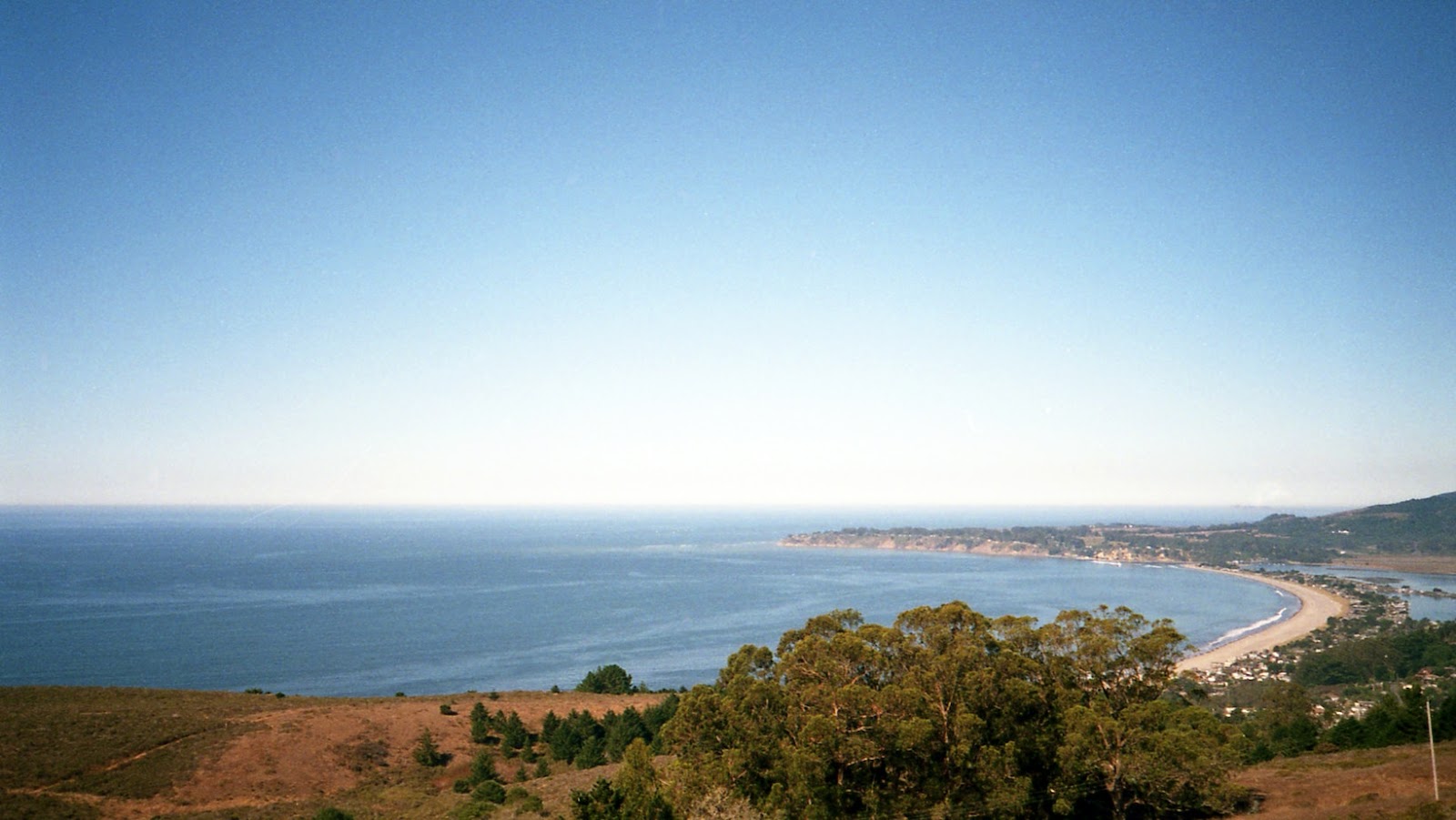To understand how Lake Tahoe was formed, you need to know about the tectonic plate movements, glaciation during the Ice Age, and formation of the Tahoe Basin. These three sub-sections hold the key to the geological history of the lake. Get ready to dive into the fascinating story of how this beautiful lake came to be.
Tectonic Plate Movements
Tectonic Activity on Earth’s Crust
Tectonic processes involving the movement, collision and interaction of earth’s crustal plates are responsible for shaping landscapes and geological formations. Lake Tahoe provides a classic illustration of how tectonic movements result in unique features.
A formative event resulted from magma flow beneath the Sierra Nevada Mountains, causing the Earth’s crust to uplift. This process created mountains, including those towering over Lake Tahoe. A period of subsidence occurred as the inland valleys expanded. During this phase, water flowing from melting glaciers formed rivers that eroded the granite rocks surrounding the lake.
The following table outlines significant events in the formation of Lake Tahoe:
Event | Explanation |
Magma flow | Molten rock underlaying the Earth’s crust uplifted it |
Subsidence | Inland valleys expanded resulting in sinking of earth’s crust |
Erosion | Water from glacier melt flowed and eroded surrounding rocks |
Pro Tip: The study of tectonic activity is critical to understanding how geological features form and evolve over time.
Seems like the Ice Age was just a really long and intense brain freeze for Mother Nature, but hey at least we got Lake Tahoe out of it.
Glaciation During The Ice Age
During the Ice Age, the planet experienced substantial glaciation, resulting in the formation of numerous bodies of water, including Lake Tahoe. The glaciers that existed in this region for thousands of years were responsible for shaping the landscape and creating natural features such as cirques, moraines, and U-shaped valleys. As temperatures began to rise after the end of the Ice Age, these glaciers started melting rapidly, leaving behind depressions that eventually filled with water, forming lakes like Lake Tahoe.
Lake Tahoe is unique due to its high elevation and depth, being one of the deepest lakes in North America. Its formation was a result of the interaction between hydrology and geology where melting ices created depression which later filled with water and formed a lake.
A phenomenon known as glaciotectonics also played a significant role in shaping Lake Tahoe’s peculiar basin shape during glacier advance and retreat periods. These tectonic movements included ploughing, folding, faulting compressive forms collectively contributing to depression formation.
Pro Tip: One must visit Lake Tahoe to see its unique beauty brought forth by its characteristics gotten from its incredible formation history. Looks like Mother Nature had a fun time digging out the deep bowl that is now Lake Tahoe, just don’t forget your life jacket when you take a dip.
Formation of The Tahoe Basin
The Tahoe Basin was formed due to geological events and volcanic activity. The mixing of magma with water and ice created natural barriers that transformed into the Lake Tahoe we know today. These processes lasted millions of years and were crucial in shaping the topography of the region.
The upliftment of the Sierra Nevada range resulted in a huge trough depression which formed when faulting occurred between the two mountain ranges. The down-dropped side was then filled with sediments from rivers, creating a valley where runoff from snowmelt accumulated over time. Later, volcanic eruptions over thousands of years caused hot magma to mix with cold water and ice above ground, creating hydrothermal vents and deposits.
These hydrothermal vents altered the chemistry of surrounding rocks and water chemistry while also producing massive amounts of heat, leading to rising evaporation rates. At some point during this period, a plug of magma solidified within one such vent system and blocked water flow. Eventually, more sediment was carried into this basin by flowing rivers creating alluvial fans that further blocked any lake outlets.
Records denote that early human settlement occurred around 10,000 years ago as Native American tribes sought refuge in these mineral-rich waters. Lake Tahoe has since become an environmental wonderland serving as a popular year-round destination for recreational activities in California and Nevada alike.
Stay tuned for a geological tour of Lake Tahoe where we’ll explore all the rocks, cliffs and formations that make this lake a real heart-throb for geologists.

How Was Lake Tahoe Formed
To gain a comprehensive understanding of the geological features of Lake Tahoe, dive into its history and explore the intricate details behind its formation. In order to better comprehend the unique characteristics of Lake Tahoe, it’s important to review the relevant sub-sections highlighting the depth and volume, shoreline and beaches, as well as the surrounding mountain ranges.
Depth And Volume
Measuring the Vastness: Lake Tahoe’s Geological Features
Lake Tahoe is known for its impressive freshwater body, making it a unique geological feature. The depth and volume of this lake are exceptional, with some remarkable distinct characteristics worth noting.
One of the most distinctive features of Lake Tahoe is its depth; in fact, it has an average depth of 989ft (301m). The maximum depth measures up to 1,645ft (501m), making it the second deepest alpine lake in North America, behind Oregon’s Crater Lake. Additionally, it holds about 39 trillion gallons (150 trillion liters) of fresh water and covers a vast area of around 191 square miles.
Apart from these factors, some other noteworthy details about Lake Tahoe add to the grandeur. It has an incredible clarity level with over 70 feet (21 m) visibility through its clear water. Moreover, despite the significant amount of snowfall and runoff generated by rivers surrounding the watershed area, evaporation play a vital role in maintaining equilibrium between water supply and demand.
To maintain the glacier-like purity and natural ambiance of the lake waters, people need to take specific measures. One suggestion is plastic control since plastics tend to degrade into small particles that contaminate bodies of water and harm aquatic life. Furthermore, responsible boating practices like throttle-open ocean boats beyond two miles either side protect against shoreline erosion due to waves and limit internal combustion engine noise pollution.
As we explore the geological features of Lake Tahoe beyond its depth and volume attributes, we begin to see what makes this landmark such a focal point beloved by all those who have visited or reside near its shores! Why build a sandcastle when you can marvel at the natural beauty of Lake Tahoe’s pristine beaches?
Shoreline And Beaches
The stunning geological features of Lake Tahoe are highly evident in its mesmerizing shoreline and beaches. The lake’s azure-blue water, surrounded by granite cliffs, is an exquisite sight that captures the attention of visitors. This treasure trove of natural beauty is also home to numerous beaches, each with a distinctive charm. From popular public beaches like Kings Beach and Zephyr Cove to secluded coves like Secret Cove and Chimney Beach, Lake Tahoe’s shoreline offers something for everyone.
Apart from its picturesque beauty, the shoreline and beaches at Lake Tahoe also serve as the perfect setting for recreational activities. Visitors can indulge in activities such as hiking, camping, kayaking, paddleboarding and even jet-skiing. One can also have a relaxing evening while watching the sunset or stargazing on the beach.
One unique feature of Lake Tahoe’s shoreline is that it changes with time and season. The water level varies throughout the year due to snowmelt in spring and early summer months. This phenomenon creates an ever-changing landscape and highlights Nature’s constant evolution.
Don’t miss out on visiting Lake Tahoe’s stunning shoreline and beaches during your trip to this mesmerizing destination. A glimpse of this wonder awaits you!
The mountains surrounding Lake Tahoe are so old, even their wrinkles have wrinkles.
Surrounding Mountain Ranges
Many towering geological features surround the beautiful Lake Tahoe. These massive mountain ranges not only make up breathtaking vistas to look at, but they also play a crucial role in the formation of this famous lake. The mountains act as natural barriers, protecting the lake from harsh, cold winds and heat waves. They also filter out impurities from the water that runs into Lake Tahoe, making it one of the purest and clearest freshwater lakes in the world.
Moreover, these mountain ranges are a hub of diversified flora and fauna. The Sierra Nevada Mountain Range is home to hundreds of species including marmots, gray foxes, black bears, coyotes, American beavers and many more. Similarly Carson Range is home to various bird species that can be spotted along with panoramic views in its nature trails.
The impressive mountain ranges surrounding Lake Tahoe are extraordinary sites that tourists should definitely not miss! Looks like Lake Tahoe’s environmental changes will be the only thing more unpredictable than my ex’s mood swings.

Environmental Changes
To understand how environmental changes have impacted Lake Tahoe, delve into the section ‘Environmental Changes’ with the sub-sections Climate, Water Quality, and Threats to the Ecosystem providing solutions. Explore how each of these factors has contributed to the geological history of Lake Tahoe and the implications for its ecosystem.
Climate
The impact of these events on the environment is immense. Climate change has led to the melting of Arctic ice caps and the rise in sea levels, highlighting the desperate need for people worldwide to come together and address this emerging crisis collectively. To address this issue requires a comprehensive approach from all nations and regions since the consequences of climate change can affect the entire planet.
Recent research suggests that some areas are experiencing harsher effects than others due to changes in weather patterns caused by human activities. These impacts can further trigger natural systems’ collapse resulting in significant losses for several species habitats.
A true example of how climate changes have already begun impacting our planet is evident through historical evidence from Antarctica’s shrinking Ice Sheet, where melting rates have nearly tripled over the past decade. As such trends continue across different areas globally, it becomes increasingly important than ever before for our world leaders to implement policies focused on environmental sustainability and conservation measures.
Looks like the only thing clear about our water quality is that it’s not clear at all.
Water Quality
Pollution is one of the major causes that alters water quality affecting aquatic plants, animals and ecosystem balance. Agricultural activities, improper disposal of waste, industrial discharges may contribute to the accumulation of nutrients which may result in oxygen depletion in aquatic environments.
Managing water quality also requires creating an integrated management plan that includes provision of clean water supply, implementing measures to prevent contamination from waste and sewage. Moreover, restoration techniques such as riparian plantings can improve overall watershed health by adding organic matter back into the soil along stream banks which helps control erosion.
It’s important to follow best practices to avoid contaminating our freshwater resources with harmful pollutants as they have long-lasting effects on both human health and wildlife. Regular monitoring ensures adherence to properly regulated guidelines, reduce threats upon nature resulting in better environmental protection policies.
Looks like our ecosystem is competing with celebrities for the title of ‘Most Endangered Species’.
Threats to The Ecosystem
The ecological system is susceptible to various hazards, posing significant challenges to environmental sustainability. Human activities, including overexploitation of resources, pollution of water bodies, and habitat loss, pose a major threat to the ecosystem. The negative impact of these activities is far-reaching and may result in devastating consequences that negatively affect humanity’s livelihoods.
A significant issue that threatens the ecosystem’s survival is climate change. The prolonged alterations in temperature patterns lead to the emergence of pests or diseases, resulting in fluctuations in food production and yield losses for farmers. Additionally, climate change alters rainfall patterns that lead to flooding or drought, further exacerbating ecosystem destruction.
Waste management is one of the pressing environmental challenges requiring immediate action. Poor waste disposal practices allow hazardous chemicals into the environment that contaminate soils and water causing adverse health effects on humans and wildlife. These effects have long lasting implications for ecosystems as it disrupts vital processes like nutrient cycling or groundwater recharge.
There are many examples where various communities around the world have experienced ecological damage due to human activities. For instance, deforestation in parts of Indonesia contributes to greenhouse gas emissions leading to warming temperatures at a global level. This example reiterates how neglecting precautionary measures towards environmental protection puts people’s lives at risk worldwide.
Looks like humans have succeeded in leaving their mark on the earth – and not the good kind like when you sign a visitor’s book.
Human Impact
To better understand the impact humans have had on the geological history of Lake Tahoe, this section will examine the different periods of time and how they have shaped the region. Starting with the Native American presence, moving on to the trapping and logging era, and finishing with the most recent tourism and development, we’ll explore the ways in which these historical events have affected the formation and preservation of Lake Tahoe.

Native American Presence
The indigenous Americans inhabited North America long before European exploration. They contributed greatly to the continent’s biodiversity and ecological balance. Native American communities varied in culture, language, and lifestyle across the regions they occupied.
Their profound reverence for nature informed their sustainable land-use practices like rotational farming, resilient crop selection, and hunting regulations. However, with the arrival of colonial powers, indigenous populations suffered casualties through genocides, forced expulsions, and epidemics.
Despite the adversities they faced, many Native American tribes endure to this day while preserving their distinct cultural identities. Today they continue to advocate for environmental protection while pursuing land justice.
A true fact: The Navajo Nation reservation has been severely impacted by colonization’s environmental consequences like uranium mining leading to radioactive contamination.
The Trapping and Logging Era, where humans made more holes in trees than a woodpecker on speed.
Trapping And Logging Era
The period of harvesting natural resources for profit has had a significant impact on the environment. The exploitation of animal fur and timber in human history, which we shall refer to as ‘Resource Exploitation’, caused massive destruction to forest systems and various animal populations. Despite emerging environmental awareness, this era led to depletion of our natural resources.
Logging and trapping were key activities at this time. Many large trees were felled to provide materials for construction, including buildings and transportation systems. Further, indigenous animals’ habitats were destroyed through indiscriminate trapping methods that resulted in species extinction or threat. Depletion of natural resources hindered the ecosystem’s ability to maintain critical balances resulting in a loss of biodiversity.
Beyond just exploiting natural resources for human benefit, other consequences included increased carbon emissions through manufacturing processes required for new building material production.
Pro Tip: Despite effective conservation efforts aimed at regenerating vulnerable ecosystems today, raised public awareness of environmental impact can be a powerful deterrent against exploitation before it’s too late.
Tourism may boost the economy, but it’s hard to ignore the environmental impact of millions of people insisting on taking selfies with endangered species.
Tourism And Development
As human beings continue to make strides in development, the tourism sector has become a crucial part of economic growth. Not only does it bring revenue and opportunities for cultural exchange, but it can also have negative impacts on the environment and indigenous communities. The development of tourism facilities often results in habitat destruction, pollution, overconsumption of natural resources, and congestion.
It is essential to consider sustainability measures and ecotourism practices that minimize the environmental impact of tourism while promoting local conservation efforts. This can include responsible waste management practices, renewable energy sources, and engaging with local communities in decision-making processes.
Moreover, it is important to recognize that tourism development can have social consequences such as displacement of indigenous populations or exploitation of labor. Governments should ensure that tourism development initiatives prioritize fair labor practices, equitably distribute benefits among local communities, and respect the rights of indigenous peoples.
A study by the World Tourism Organization (UNWTO) found that sustainable tourism could generate economic benefits while preserving natural and cultural resources. By implementing environmentally conscious policies in conjunction with sustainable business practices, we can create a brighter future for both the economy and our planet.
Conservation efforts are like trying to put out a forest fire with a squirt gun – it’s a noble effort, but ultimately ineffective against the immense impact of human activity.





